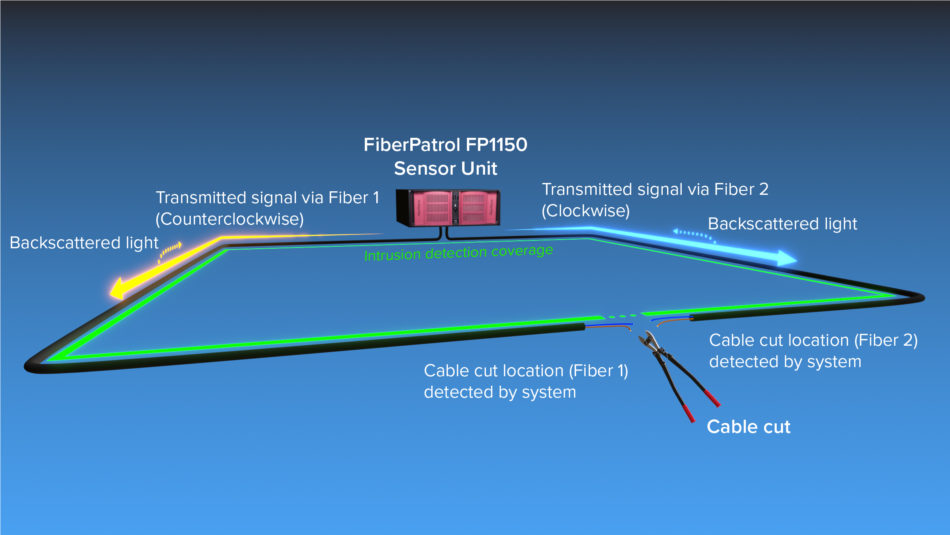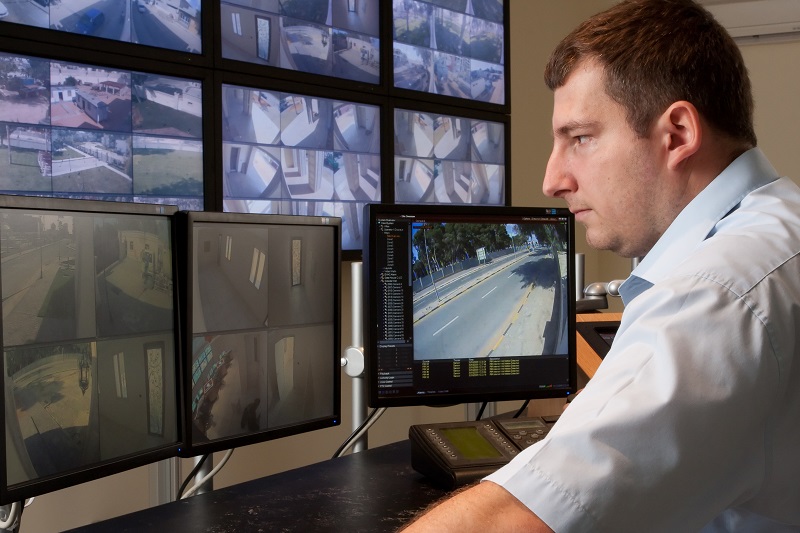How Fiber Security Helps Prevent Unauthorized Access and Boosts Surveillance
How Fiber Security Helps Prevent Unauthorized Access and Boosts Surveillance
Blog Article
Why Fiber Optic Safety And Security Solutions Are the Future of Defense
The shift to fiber optic security systems notes a substantial improvement in the realm of security, driven by their extraordinary data transmission abilities and strength to outside disturbances. These systems not just assist in faster and a lot more trusted communication yet likewise provide a cost-effective option with lowered upkeep needs. As the landscape of protection advances alongside emerging innovations such as AI and IoT, the capacity for optical fiber to improve and redefine safety infrastructures ends up being increasingly apparent. The implications of these innovations elevate critical questions about the future of protection measures and their performance in an ever-changing setting.
Benefits of Fiber Optic Solutions
Among the main benefits of fiber optic systems is their exceptional bandwidth capacity, which promotes the transmission of huge quantities of information over cross countries without substantial loss. This characteristic is particularly beneficial for safety and security applications that need the constant monitoring and transfer of high-definition video clip feeds, sensing unit information, and other critical info. Optical fiber can fit the growing demands of contemporary safety and security systems, ensuring that information continues to be undamaged and trustworthy.
In addition, fiber optic cables are much less susceptible to electromagnetic disturbance, which can be a significant problem in atmospheres with various digital tools. This resistance improves the honesty of the information being transmitted, therefore reducing the threat of information breaches or system failings. Fiber optic systems are inherently more safe and secure than conventional copper cables, as tapping into a fiber optic line without detection is extremely hard.
The toughness of fiber optic cables also contributes to their allure. They are resistant to environmental aspects such as moisture and temperature changes, lowering upkeep prices and enhancing system long life. Generally, these benefits placement fiber optic systems as a durable and efficient selection for contemporary protection infrastructures, ensuring reliable and safe data transmission.
Enhanced Information Transmission Rate

The capability to transmit huge quantities of data promptly helps with the seamless combination of high-def video clip feeds and advanced analytics. Safety systems can currently process and examine info in real-time, enhancing response times and situational awareness. Furthermore, fiber optic links support longer transmission ranges without degradation of signal top quality, making them ideal for large safety networks.
The boosted rate of fiber optic systems not only boosts the performance of protection operations however likewise lowers latency. This is particularly crucial in crucial circumstances index where timely decision-making can avoid safety violations or mitigate possible hazards. As organizations continue to focus on safety and security and efficiency, the need for quick and trusted data transmission will most certainly solidify fiber optic systems as a cornerstone of modern protection facilities.
Resistance to Interference
Fiber optic protection systems constantly show exceptional resistance to electro-magnetic disturbance, a crucial benefit in atmospheres prone to electronic noise. Unlike traditional copper cords, which can be negatively influenced by magnetic fields, superhigh frequency disturbance, and other kinds of electrical disruption, fiber optic wires use light to transmit information. This integral building makes sure go to this web-site that the signals stay clear and unchanged, despite bordering digital task.
The use of glass or plastic fibers in fiber optic modern technology creates a barrier versus interference, enabling for reliable data transmission even in difficult scenarios such as commercial facilities, city areas with high electronic website traffic, or places near radio towers. This particular dramatically decreases the probability of signal deterioration or loss, making fiber optic systems particularly suitable for safety and security applications where stability and precision of information are vital.
Additionally, this resistance to disturbance enhances the overall efficiency and reliability of safety and security systems, guaranteeing that tracking and sharp systems operate seamlessly. In a world where safety is significantly intimidated by sophisticated technologies, the durability of fiber optic systems sticks out as a critical attribute, enhancing their condition as a crucial part of modern-day protection facilities.
Cost-Effectiveness In Time
Considerable expense savings can be achieved over time with the implementation of fiber optic safety systems. While the initial investment may appear higher contrasted to typical copper-based systems, the lasting financial benefits come to be evident through reduced operational and maintenance expenses (fiber security). Fiber optic cable televisions are inherently a lot more long lasting and less at risk to environmental elements, which translates to lower substitute and repair work expenses over their life-span
Furthermore, fiber optic systems need much less power to run, which additionally decreases energy expenses. Enhanced information transmission abilities allow for fewer repeaters and amplifiers, decreasing tools investment and simplifying installation procedures. The scalability of these systems likewise adds to cost-effectiveness, as companies can broaden their security facilities without incurring substantial additional expenditures.
An additional factor to think about is click reference the boosted effectiveness in surveillance and response abilities that fiber optics supply. Boosted real-time information transmission can cause quicker case response times, possibly mitigating losses and obligations linked with security breaches. Altogether, the long-lasting advantages of fiber optic safety systems not only validate the preliminary expense but likewise position them as a monetarily prudent option for companies looking for robust security options.

Future Technologies in Safety And Security
Advancing technologies are established to change safety and security systems, incorporating fabricated intelligence (AI) and artificial intelligence to boost threat detection and feedback capabilities. These developments will certainly allow safety and security systems to examine large quantities of data in real-time, identifying patterns and abnormalities that show potential threats. This positive strategy will enable quicker decision-making and more effective event feedbacks.
Furthermore, the consolidation of the Web of Points (IoT) is leading the way for interconnected safety and security gadgets, supplying extensive monitoring and tracking. Smart sensors can pass on details concerning ecological modifications, while automated notifies can inform safety personnel instantly of suspicious tasks.
Furthermore, the advancement of biometric innovations will additionally strengthen protection systems. Face acknowledgment, finger print scanning, and retina identification are becoming extra advanced, offering layers of authentication that are challenging to bypass.
Verdict
Finally, fiber optic safety and security systems stand for a substantial improvement in protection modern technology, offering unparalleled information transmission speed, resistance to electro-magnetic interference, and lasting cost-effectiveness. As the demand for advanced security remedies remains to grow, the combination of optical fiber with emerging modern technologies such as AI, IoT, and biometrics will better enhance protection frameworks (fiber security). The combination of these technologies will certainly ensure a much more secure and receptive setting, solidifying optical fiber as a keystone of future protection systems
Report this page